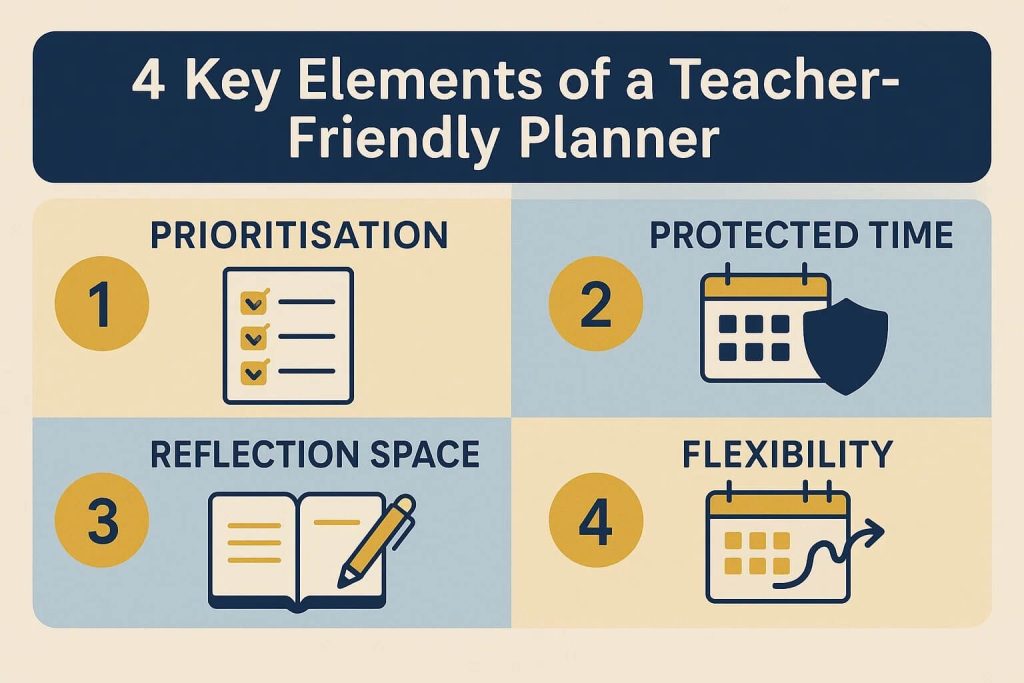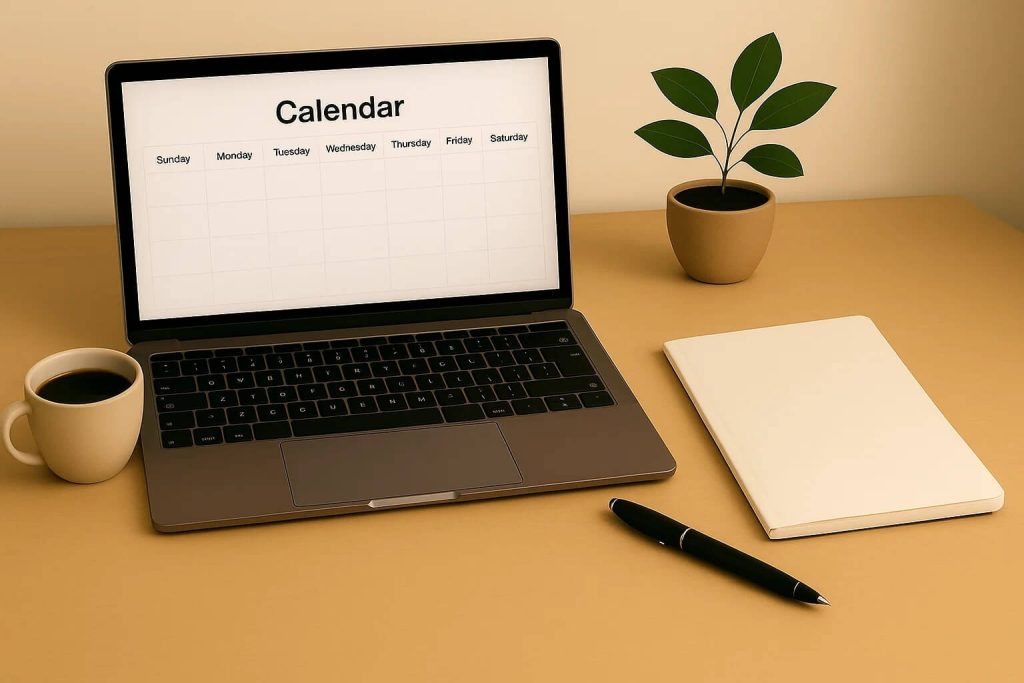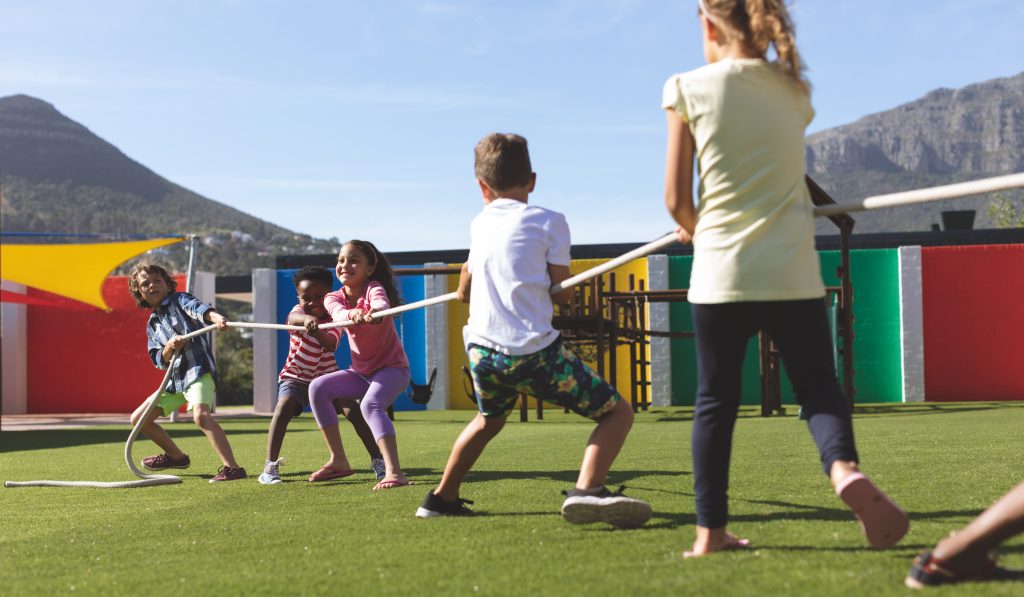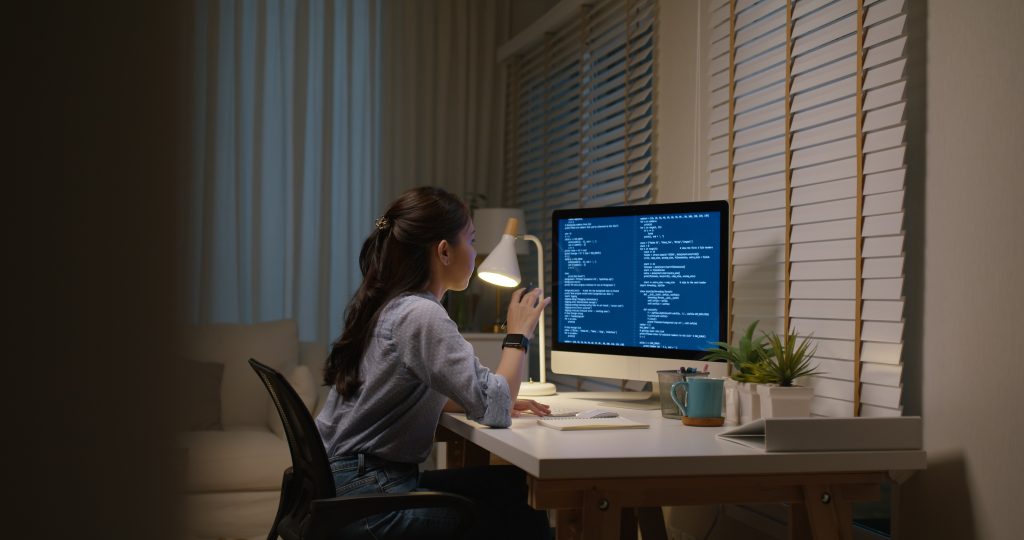Teachers are some of the most committed planners in any profession, yet many still find themselves working late into the evening or catching up on weekends. The problem isn’t a lack of organisation, but rather the structure of most planners themselves. Too often, they’re designed to track tasks and productivity, not to protect time or preserve energy.
What’s missing is space for intentional rest. A well-designed weekly planner can help teachers establish healthier boundaries, reduce decision fatigue, and create time to genuinely unplug. Across the AISL Mall educator community, there’s growing interest in planner formats that support both performance and wellbeing. Our article explores how to design or adapt a weekly planner that not only keeps you on track, but also gives you permission to stop.
Why Teachers Need a Different Kind of Weekly Planner
The school day might officially end in the afternoon, but for many teachers, the work continues long after students have gone home. Lesson planning, marking, answering messages, and catching up on admin can spill over into personal time, especially when boundaries aren’t clearly defined. Without intentional limits, this always-on mindset can lead to exhaustion, reduced creativity, and long-term burnout.
Traditional Planners Focus on Output, Not Recovery
Most weekly planners are built to track tasks and deadlines, often rewarding busyness over balance. While they’re useful for listing to-dos, they rarely prompt reflection, wellbeing, or time-off routines. In practice, this means many educators plan for productivity, but not for energy.
What Are the Elements of a Teacher-Friendly Weekly Planner?
An effective weekly planner for educators should do more than just track what needs to be done. It should also help manage energy, reinforce boundaries, and create space for professional reflection. These key features can transform a basic planner into a tool that supports both productivity and wellbeing.

Prioritisation, Not Just Lists
Rather than listing everything that needs doing, use sections such as “must do,” “nice to do,” and “can wait.” This helps reduce overwhelm and allows you to focus on what really matters each day. Prioritising tasks in this way also encourages more realistic weekly planning, which is especially helpful in weeks with unexpected meetings or student needs.
Protected Time Blocks
Dedicate clear blocks in your planner for focused work, scheduled breaks, and no-work zones. Use colour coding or visual shading to mark time for personal activities like family time, exercise, or simply switching off.
Space for Reflection and Wins
A small daily or weekly prompt, such as “What went well today?” or “One moment that made me smile”, can shift the focus from tasks completed to growth experienced. Over time, this reinforces a positive feedback loop and helps teachers recognise progress, even during high-demand weeks.
Built-In Flexibility
Leave a blank space in your weekly layout for catch-up tasks or last-minute changes. This “reset box” gives you permission to move things without guilt, especially when your day doesn’t go to plan. Planning for flexibility, rather than perfection, supports long-term sustainability in teaching.
How to Design Your Own or Adapt an Existing Planner
The most effective planner is one that reflects your real teaching rhythm. Whether you’re starting from scratch or customising a store-bought layout, these steps can help you create a system that genuinely supports unplugging and balance.
Start with Your Teaching Reality
Begin by mapping your current weekly patterns. When are your peak energy hours? Which tasks typically spill over into personal time? Identifying these trends can help you structure your planner around moments of focus, margin, and recovery.
Choose Your Format
There’s no one-size-fits-all. Some educators prefer digital tools like Google Calendar, Notion, or time-blocking apps for flexibility and integration. Others gravitate toward paper planners, bullet journals, or printed templates that allow for tactile planning and reflection. Consider how mobile your role is and whether you prefer visual layouts or linear lists.

Insert “Unplug” Anchors
Add intentional cues in your planner that signal when the workday ends. This could include a section for “Shutdown Time” or prompts like “Log out of school email by…” or “Evening screen break starts at…”. Visual reminders can help establish healthy boundaries, especially when teaching remotely or during busy reporting periods.
Sustainable Planning Habits for the Long Term
Designing a thoughtful planner layout is only the beginning. The real impact comes from building consistent habits that help you reflect, reset, and maintain realistic expectations across the school year.
Review Weekly, Adjust Monthly
Take 10 minutes at the end of each week to reflect: What worked? What felt rushed? Which tasks could be streamlined or dropped? Then, at the end of each month, look for bigger patterns, such as are weekends consistently overloaded? Is admin creeping into your evenings? These insights help you plan proactively rather than reactively.
Model Boundaries for Students and Colleagues
When teachers actively manage their own workload and prioritise wellbeing, they set a powerful example for the school community. Share your boundary-setting strategies with students, like taking screen breaks or planning time for rest, as part of a broader conversation about self-management. It not only normalises balance but also encourages learners to develop their own healthy routines.
Planning for Peace, Not Just Productivity
A truly effective weekly planner is there to protect your time, energy, and wellbeing. For teachers juggling high expectations and long hours, the ability to unplug is essential. When your planner includes space for boundaries, reflection, and intentional rest, it becomes a tool for resilience, not just efficiency.
For more tools and strategies that support teacher wellbeing and professional growth, explore the educator resources available at AISL Mall.










